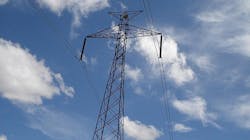DOE Announces $11 Million Program for 4 HVDC Transmission Projects
The U.S. Department of Energy’s (DOE) Office of Electricity (OE) and Office of Energy Efficiency and Renewable Energy (EERE) have selected four high-voltage direct current (HVDC) transmission research and development projects to help incorporate more renewable energy generation onto the grid through HVDC lines affordably.
The approximately $11 million program, called the Innovative DEsigns for high-performAnce Low-cost HVDC Converters (IDEAL HVDC), will help reduce transmission system costs by 35 percent by 2035, and promote widespread technology adoption. While OE is providing $8.1 million in funding, EERE’s Wind Energy Technologies Office will offer $3 million for the program.
HVDC transmission systems are more efficient as compared to traditional alternating current (AC) transmission systems to deliver electricity at a lower cost and minimizing power losses. Moreover, many renewable generation resources are in remote locations on land or planned far from shore (e.g. offshore wind), and HVDC transmission provides a cost-effective solution for renewable integration onto the grid.
High-voltage transmission has the potential to transfer power between different regions of the country more capably, without disrupting the frequency of either system. It also helps reduce delivery costs.
“A modern grid requires a transmission network that can offer access to a diverse range of clean energy resources across geographic regions,” said Jeff Marootian, Principal Deputy Assistant Secretary for the Office of Energy Efficiency and Renewable Energy. “These investments will help our efforts to improve energy reliability for consumers by better integrating both land and offshore power sources like wind onto the grid.”
The selected IDEAL HVDC projects include:
- GE Vernova Advanced Research: $3.3 million to develop a low-cost HVDC transmission access point substation to reduce HVDC life cycle costs by more than 30%. TAPS aims to provide access to affordable renewable energy to underserved and underrepresented communities.
- Sandia National Laboratories: $1.8 million to increase the power density and reduce cost of HVDC converter stations by 10% by developing a technology of smaller 1.7 kV switches that can be operated as a single 10 kV switch in a converter.
- University of Pittsburgh: $3 million to use artificial intelligence to optimize an HVDC converter design for increased power density and decreased cost.
- Virginia Polytechnic Institute and State University: $3 million to investigate promising circuit technologies to upgrade the existing HVDC converter design. This approach aims to reduce direct material technology costs by 15-20%.
The selections will support DOE’s HVDC COst REduction (CORE) Initiative, to improve grid resilience, security, and operation flexibility.
